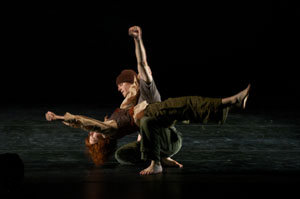8.) MAKING CONNECTIONS Dance as a Form of Social Protest

Emma Goldman, a nineteenth-century revolutionary and early feminist, is famous for saying: “If I can’t dance, then I don’t want to be a part of your revolution.” Her belief that physical movement is essential to the success of a political movement is telling. After all, why are so many political and social reform movements called movements? Probably because they literally try to get people up out of their complacent chairs (or couches) and out into the streets. Dance sends the body into action. Could this mean that dance has inherent revolutionary potential
Classroom Activity: Movements of Social Protest
Have the students list as many social and political movements as they can. (Some examples might included the civil rights movement, the women’s movement, the gay rights movement, the disability rights movement, etc.) Ask them if they can think of any gestures or dances that are associated with these forms of liberation? Have them write one paragraph addressing the following prompt: What does it mean to be free to move or dance?

